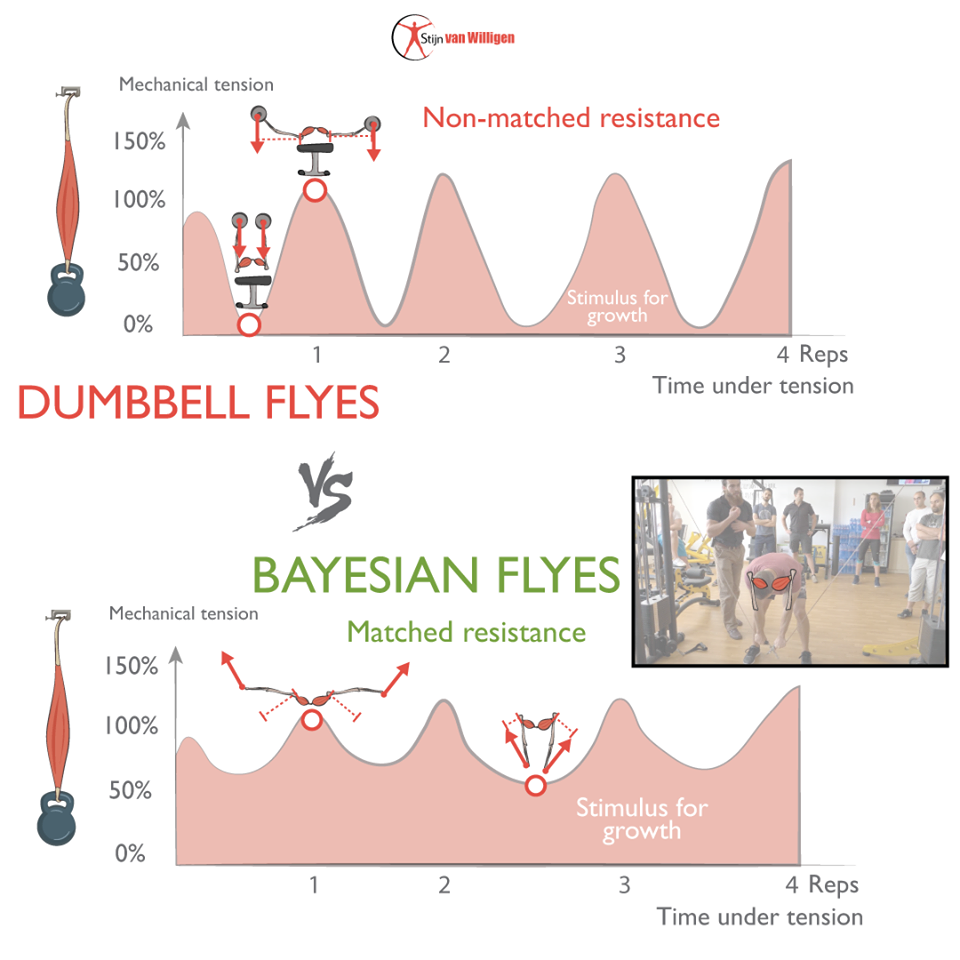Dumbbell flyes: 95% of the gym does them, but why? Norms. Culture. Tradition.
Let’s actually think about and analyze this exercise, before proposing a better alternative, invented by @menno.henselmans.
First, let’s clarify some concepts:
-Muscle strength: the capacity of the muscle to produce for at a certain muscle length
-Resistance: the resistance of a weight on the muscle (a factor of weight x distance from joint)
– Stimulus for muscle growth = Mechanical tension x Time under tension
Now let’s tear these exercises apart, hmm?
Dumbbell flyes generate little Resistance on the chest at the top: the weights are just dangling above your chest. There is no (mechanical) Tension on the chest and on average the entire movement produces less Stimulus for muscle growth. We could also say: the resistance is not well-matched to the muscle strength.
However, Bayesian flyes (performed with cables) still generate Resistance on the chest at the end of the movement, when the chest is shortened.
Therefore there is still (mechanical) Tension on the chest in this part of the movement, and overall the resistance is matched more to the muscle strength.
Adding a resistance band to your Bulgarian split squat or Romanian deadlift does the same thing: by making the top portion of the movement heavier, you’re matching the resistance curve to the strength curve of the glutes, which means more stimulus for growth.
Now try not to judge the Dumbbell fly too much: it’s still suitable for beginners, and, well, Ronnie Coleman. But it’s far from optimal from a biomechanical perspective.
For a free lesson on “How to fly” with only one cable, see my free Patreon lesson: (story)
Finally, note that cable flyes work just fine as well, provided you create tension on your pecs at the end of the movement.





Leave A Comment